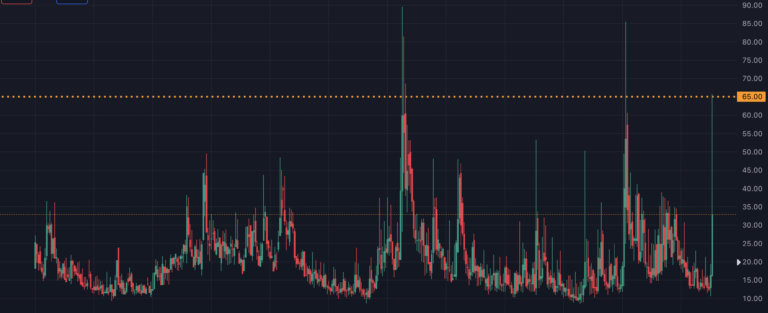3 Trading Style Tips, Stay Calm During Market Panic
Trading can be compared to an individual sport, where success depends on your skills, strength, and ability to avoid self-sabotage. In golf or tennis, the saying goes, “The player who makes the fewest mistakes wins.” The same is often true in trading. If you practice a contrarian trading style, such as the trading fear approach I discuss on this site, having good control over yourself to avoid mistakes is crucial. When trading fear, you’re often required to stay calm and methodical in conditions that cause others to panic and make mistakes.
If you’re currently grappling with the psychological aspects of trading—particularly if fear is causing you to get in your own way—here are some trading style changes you can implement today to help you out:
Use Data as Your Anchor: One of the most effective tools for maintaining emotional control while trading is having robust strategy test data at your disposal. This data provides you with realistic expectations of both good and bad performance periods that your strategy is likely to encounter. Strategy test data offers a historical perspective, showing that current market conditions, no matter how extreme they might feel, have likely been encountered before. This knowledge can help you stay calm during turbulent times.
By analyzing past performance, you can set realistic expectations (not exact predictions) for wins, losses, and drawdowns, preventing panic during normal strategy fluctuations. When you see that your strategy has weathered similar conditions in the past and still performed well over the long term, it builds confidence in your approach. If you do find that your strategy begins to deviate significantly from your test data, it offers a logical foundation for considering whether to pause or reassess your approach. Essentially, this data acts as a robust anchor, rooting your decisions in hard evidence rather than fleeting emotions.
Of course, this data is only valuable if it comes from a robust testing methodology. A good general-purpose method to start with is combining in-sample and out-of-sample walk-forward testing. This is a large topic, so I recommend listening to this excellent episode of “Systematic Investor,” which discusses this back testing approach in detail.
Opt for Higher Timeframes: Trading on daily or even weekly charts provides more time for thoughtful decision-making. Use the downtime between market close and the next open to plan trades, place orders, and update your trading journal. It’s a calmer experience making decisions without live market information bombarding you. The information remains largely unchanged between market close and open, removing the urgency to make snap decisions.
Many successful traders exclusively use higher timeframes. Don’t be misled by the exciting, intense lifestyle that day traders often promote. Trading isn’t like a video game—it’s frequently less glamorous than they make it out to be.
Go Mechanical: Mechanical rules-based trading offers several benefits for traders seeking to improve their emotional self-control and overall trading performance. By implementing a systematic approach, traders can significantly reduce the impact of emotions on their decision-making process, leading to more consistent and disciplined trading.
One of the primary advantages of mechanical trading is the deduction of emotional decision-making. By adhering to a set of predefined rules, traders can minimize impulsive actions driven by fear or greed, which often lead to poor or flukey outcomes. This approach promotes consistency in trade execution, as decisions are based on specific, predetermined criteria rather than fluctuating emotions or market noise.
Another benefit is the reduced mental load during active trades. With a clear, documented plan for each trade, including entry reasons, management strategies, and exit plans, you can focus on executing your strategy rather than constantly reevaluating your position. This not only helps in maintaining emotional stability but also allows for more efficient use of your time.
Mechanical trading also enables objective performance evaluation. A rules-based system allows for easier assessment of trading results based on consistent inputs and processes. This approach eliminates the influence of emotional biases and unreliable memories, helping traders pinpoint areas for improvement more accurately.
Mastering the psychological aspects of trading is as crucial as developing a solid strategy. By implementing these tips—using data as an anchor, opting for higher timeframes, and considering mechanical trading—you can enhance your emotional control and decision-making process. Remember, successful trading isn’t just about making profits today; it’s about consistently executing your strategy while managing your emotions effectively over the long term to stay in the game and preserve your capital. As you apply these techniques, you’ll likely make fewer mistakes, maintain composure during market turbulence, and ultimately become a more disciplined and successful trader. Keep in mind that improvement is a journey—be patient with yourself and celebrate the small victories along the way.





